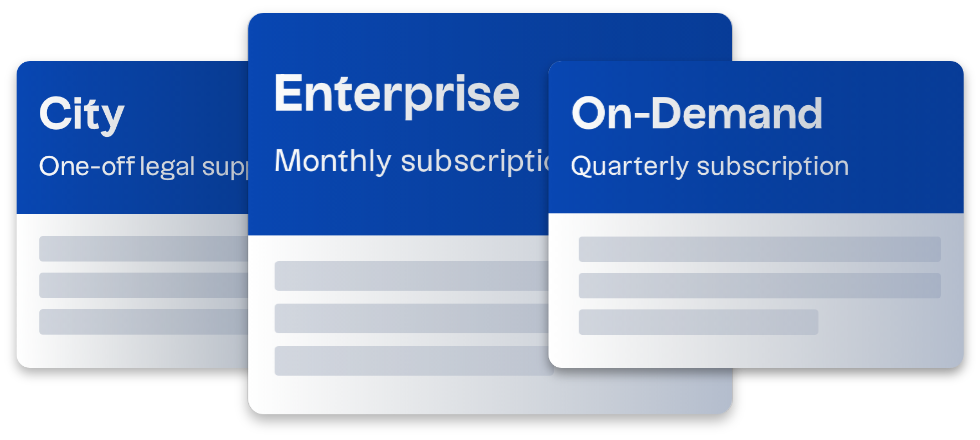There is a lot to consider when taking on your first employee, from employment contracts to liability insurance, but one aspect which often gets overlooked is the legal obligation to automatically enrol workers into a qualifying pension scheme and to make contributions to that scheme.
As an employer, you need to understand your legal duties in this area, who is eligible to be auto-enrolled into a pension scheme, the pension options available, the pitfalls to watch out for and the consequences of not getting it right. We will look at all these issues in turn below.
Contents:
- What classifies an employer?
- Who must be automatically enrolled into a workplace pension scheme?
- Is pension auto-enrolment a legal requirement?
- The auto-enrolment pension process and employer’s duties
- What qualifying pension schemes are available?
- What typical errors are there in workplace pension schemes?
- What are the consequences of not complying with the auto-enrolment rules?
- I want to set up a pension scheme. What are the next steps?
What classifies an employer?
Broadly, you are classed as an employer if you deduct tax and National Insurance contributions from a worker’s pay. Even if you only have one member of staff, you are still an employer and therefore are still subject to the auto-enrolment pension obligations.
Who must be automatically enrolled into a workplace pension scheme?
Not all workers will have to be auto-enrolled into a qualifying pension scheme but as an employer you must continuously assess and monitor the eligibility of workers to prevent you from becoming non-compliant.
A qualifying pension scheme is one which has to meet specific conditions to qualify as a pension scheme for auto-enrolment pension rules – we will look at this below.
Employees and workers who must be automatically enrolled into a workplace pension scheme are referred to as ‘eligible jobholders’.
There are essentially three categories of workers for auto-enrolment purposes:
- Eligible jobholders – must be automatically enrolled
- Non-eligible jobholders – have a right to opt in
- Entitled workers – have a right to join
There is a very helpful resource on The Pensions Regulator’s website which sets out the different categories of workers in diagram form which can be found here. As this is a rather complex area, we would be happy to talk you through this and assess your workforce together on a case by case basis.
All eligible jobholders must be automatically enrolled into a qualifying pension scheme and a minimum level of employer’s contributions must be made into that scheme. An eligible jobholder will be:
- aged between 22 and the state pension age
- earn (before tax) at least £10,000 per year
- normally work in the UK
Is pension auto-enrolment a legal requirement?
As an employer, your duty to comply with the auto-enrolment pension rules begins on the first day of employment or the date on which the eligible jobholder meets the criteria – referred to as the ‘duties start date’. You have a six-week period (the scheme joining window) to enrol the eligible jobholder and provide them with the relevant information about the pension scheme. You also have the ability to postpone auto-enrolment for up to 3 months.
An eligible jobholder who has been automatically enrolled will have a right to opt out of the pension scheme but you must first automatically enrol all eligible jobholders into the scheme before they can opt out of it.
In order to avoid the continuous monitoring and assessment of staff eligibility, one option would be to enrol all new workers into the qualifying pension scheme as part of the terms of their employment contract – this is referred to as ‘contractual enrolment’.
The auto-enrolment pension process and employer’s duties
| Duty | Due Date | Points to Note |
| Identify eligible jobholders | As soon as possible – the duties start date is the first day of employment or the first day of meeting the criteria | It may be worth putting in place an automatic process to identify all eligible jobholders, non-eligible jobholders and entitled workers on an ongoing basis Consider the option of contractual enrolment |
| Choose a qualifying pension scheme | Start researching and deciding on this in plenty of time before the duties start date | If using an existing scheme, make sure it meets the criteria to be a qualifying scheme |
| Automatically enrol eligible jobholders and make any necessary contributions | Duties start date No later than six weeks after duties start date | Eligible employees must be automatically enrolled even if they wish to subsequently opt-out |
| Give notice to employees | No later than six weeks after duties start date | All employees must be given notice in writing about their eligibility for auto-enrolment The Pensions Regulator offers template letters that employers can use |
| Submit declaration of compliance to The Pensions Regulator | No later than five months after the duties start date | All employers must do this even if they don’t have eligible employees |
| Re-enrol eligible employees (who have opted out) | Third anniversary of the duties start date | Another declaration of compliance must be submitted at this time to The Pensions Regulator and eligible staff must be written to within 6 weeks of the re-enrolment date to inform them of their re-enrolment |
| Requests to opt in, join or opt out | Within one month of the request | Procedures and information provision should be established for these requests Opt-out notices should be requested from the scheme itself, if necessary |
| Record keeping | For six years except for requests to leave the scheme which must be kept for four years | Records should include: names and addresses of those enrolled, dates of contributions, requests to opt in or out and the pension scheme reference or registry number |
| Employment contracts | Ensure you are happy with the standard contract wording before starting the hiring process and review on an ongoing basis | Check all pension clauses and wording in employment contracts to ensure it is compliant with the auto-enrolment rules Consider whether you want to include a provision for contractual enrolment |
| Continuous assessment of workers and qualifying pension scheme | Monitor the ages and pay of workers so you can enrol them when they become eligible and ensure the pension scheme continues to meet the criteria of a qualifying pension scheme | It is worth putting in place an automatic process to identify different categories of workers on an ongoing basis Consider the option of contractual enrolment |
What qualifying pension schemes are available?
There are numerous pension scheme options available to employers who may use an existing or new occupational pension scheme or personal pension scheme, provided the scheme meets the requirements of a qualifying scheme for auto-enrolment purposes. The criteria are quite complicated and refer back to the underlying pensions legislation so we would recommend contacting us for more detailed advice on this if needed.
Many first time employers and small businesses may prefer to use NEST (National Employment Savings Trust) which is a government-established pension scheme created to allow employers without their own existing scheme to use a qualifying pension scheme.
What typical errors are there in workplace pension schemes?
As the rules around auto-enrolment are dense and have been changing over a number of years since their introduction, it can be very easy to make mistakes and oversights in this area of law. Typical errors made by employers include:
- incorrectly categorising a worker and so failing to auto-enrol eligible jobholders
- failing to continuously assess the workforce and/or pension scheme and missing workers who become eligible jobholders or failing to meet the criteria for a qualifying pension scheme
- not initially enrolling eligible jobholders who wish to subsequently opt out
- not providing the correct information to workers on time
- breaching employment protections for workers – employers must not question candidates about intentions to opt out of the pension scheme nor offer higher salaries or bonuses as inducements to opt out
- making incorrect or late contributions to the pension scheme
- delays in establishing the pension scheme
- using the postponement option to hold off on auto-enrolment and failing to inform eligible jobholders
What are the consequences of not complying with the auto-enrolment rules?
The Pensions Regulator is the body responsible for monitoring and enforcing compliance with the auto-enrolment rules. It has the power to inspect premises and require disclosure of information by employers in suspected breaches.
The Pensions Regulator also has the power to issue compliance and enforcement notices to employers and third parties, as well as fixed and escalating penalty notices if the breach is not remedied.
It will also publish the names of non-compliant companies which can have a detrimental effect on a business’ reputation and goodwill.
I want to set up a pension scheme. What are the next steps?
Auto-enrolment is actually relatively simple to get right, and as with a good share or option scheme, access to a pension scheme can attract good staff who can help you meet the aims of your business. Putting in place structures at the start to make sure you’re compliant will remove potential risk, both in terms of growing your business and when looking to exit.
If the process is not followed correctly, it can cause real problems for your business as it has the potential to leave your reputation damaged and your business out of pocket. If you intend to sell your business, then buyers will often get wrapped up in technical non-compliance pension issues causing delays to transactions which is undesirable in the current economic environment.
It makes sense to get advice on your pension obligations, what your options are, and what communication you’ll need to put in place with a project plan from your lawyers and accountants to avoid any potential issues. Our team of employee incentives experts can answer any questions you may have on the auto-enrolment process and offer guidance when putting in place structures and processes to ensure you remain compliant with the rules and laws which are frequently being updated. Call us on 0800 689 1700 or fill out the short enquiry form below with your details and a member of our team will be in touch.

